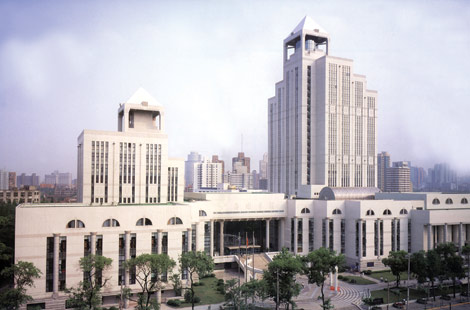Wal-Mart to build community shopping center in China
Updated: 2014-09-05 06:44
By WANG ZHUOQIONG in Beijing and JACK FREIFELDER in New York(China Daily USA)
|
||||||||
Zhuhai facility a step toward cutting high rental costs, analysts say.
Wal-Mart Stores Inc is building its first community shopping center in China in a move that the retailer hopes will give it more control over store layouts as the company grapples with high commercial rents in the world's second largest economy.
The center, named The Zhuhai Mall, will be in the southern Chinese city of Zhuhai, Guangdong province.
The estimated cost for the project is 600 million yuan ($97.7 million) and the area under construction will total 100,000 square meters.
The complex, which will house at least one Sam's Club location, will be the first shopping mall built, developed and managed by Wal-Mart in China. It is expected to open for business in 2016, according to Walmart China.
Wal-Mart, a multinational retail conglomerate headquartered in Bentonville, Arkansas, runs an international chain of stores, including Wal-Mart Supercenter and Sam's Club. The company oversees nearly 11,000 stores and more than 2.2 million employees in 27 countries, while managing e-commerce websites in 10 of those markets.
Walmart China, which comprises 400 retail units and more than 100,000 employees, began with the opening of two stores, a Walmart Supercenter and a Sam's Club, in Shenzhen in 1996. Sam's Club, founded in 1983, now has 10 outlets in eight Chinese cities, with online delivery service also available.
Jason Yu, general manager of Kantar Worldpanel, a research institute and consultancy on the fast-moving consumer goods market, said the move to develop a shopping center is a sign that the US-based retailer has started to “take ownership of design and creation of the ecosystem of its stores” by selecting and building its own commercial property site.
The decision will also give Wal-Mart more control over such tangible factors as the infrastructure of the center and rental costs, as well as the “shopping experience” for consumers, Yu said.
On Aug 27, the US-based retailer announced in a press release that it was going to require 70 percent of its business in China to take part in an energy efficiency program by the end of 2017. As a result, the company forecasts significant potential savings over the next three years.
To date, 40 factories in China have participated in a 2014 pilot program, and close to 500 facilities will be invited to participate in the program by the end of 2017.
In that three-year period, Wal-Mart also plans to open 110 new storefronts in China. The locations will be primarily located in second-, third- and fourth-tier cities, and will create nearly 20,000 new jobs, according to company statements.
Doug McMillon, president and CEO of Wal-Mart, said in an Aug 14 earnings conference call that the company's plans in China center on the growing trend of e-commerce sales, an area where the company will be “investing significantly” in the near future.
Ben Cavender, principal at the China Market Research Group, said that direct ownership of the center could also help Wal-Mart generate revenue by renting spaces to other retailers of its choice.
Yu, with Kantar Worldpanel, said most retailers in China rent their space from developers, so they inevitably face challenges if rents increase significantly after the first 10-year lease. And ultimately, retailers have no control over their neighboring stores, which can affect a consumer's experience.
Yu also said retail shopping centers are growing at the expense of traditional department stores because of a consumer preference for one-stop shopping. And since the city of Zhuhai is a key market in the Pearl River Delta region, a Sam's Club location there would be well positioned to attract a growing number of middle-class shoppers.
Contact the writers at wangzhuoqiong@chinadaily.com.cn and jackfreifelder@chinadailyusa.com
Most Viewed
Editor's Picks

|

|

|

|

|

|
Today's Top News
Boao Forum meets in US
Can Koreas unite? Experts differ
Canton Fair readies for 116th go
Wal-Mart to build community shopping center in China
US to pave way for Obama's visit
Wal-Mart seeks China growth
Firms fret over monopoly probes
Chinese TV dating comes to Houston
US Weekly

|

|
















